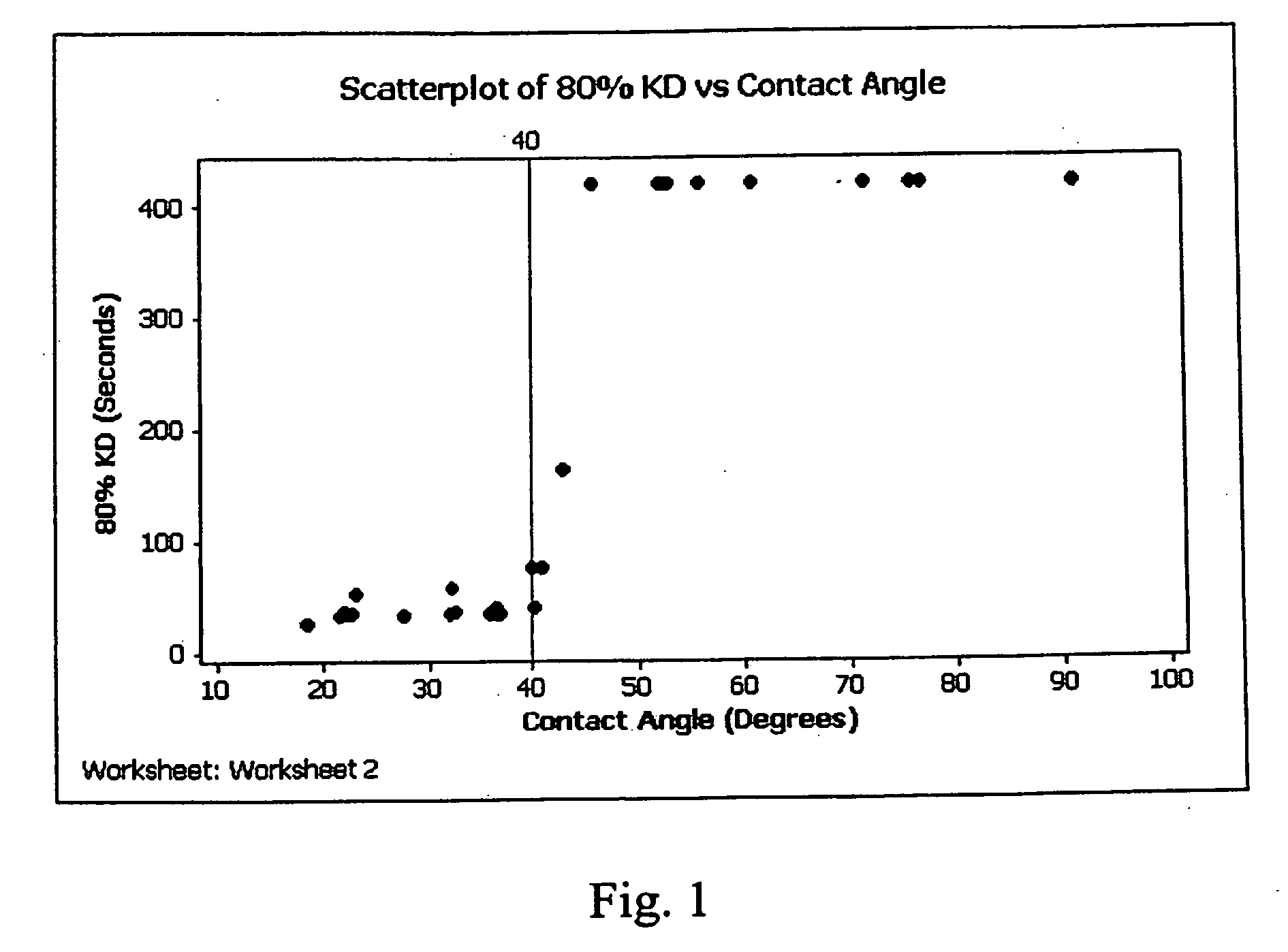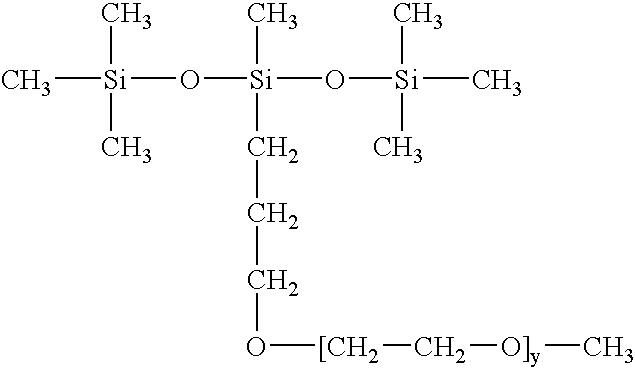Methods for treating arthropods
a technology for arthropods and treatment methods, applied in the field of treatment methods for arthropods, can solve the problems of insufficient efficacy of causing rapid knockdown (kd) and “knockdown” (kd) of arthropods treated, and achieve the effect of effective arthropod knockdown ra
- Summary
- Abstract
- Description
- Claims
- Application Information
AI Technical Summary
Benefits of technology
Problems solved by technology
Method used
Image
Examples
example 1
[0055]Test formulations for use in this Example 1 were prepared by introducing and mixing the surfactant / surfactants specified in Table 1 below in water at the concentrations indicated therein and the contact angles resulting when drops of these formulations were deposited on solid surfaces corresponding to the solid exoskeleton surface of an arthropod were measured according to the procedure set forth herein below and the average contact angles derived from this testing are set forth in the following Table 1:
TABLE 1Average Contact Angle after 80 Milliseconds (Surfactants in Water)CONCENTRATION (Weight %)SURFACTANT0.05%0.10%0.50%1.00%1.50%Silwet REACH51.742.823.122.242.4Silwet L-7760.826.427.621.523.7Silwet REACH / Silwet52.736.421.918.422.8L-77Agrimax 376.969.645.736.935.9Tmulz 122771.457.240.236.932.0Ethylan TD-6055.751.942.940.040.9Ethylan NS-500LQ68.065.957.352.848.7Lankropol 450072.160.738.332.530.1Silsurf D20891.290.677.275.975.8Zonyl FSO72.668.855.655.153.1Sliwet 80656.749.532....
example 2
[0068]Test formulations for use in this Example 2 were prepared in accordance with the procedures described in Example 1 whereby the surfactant / surfactants specified in Table 2 below were introduced and mixed in water at the concentrations indicated in the table. Then, the resulting test formulations were screened for knockdown efficacy by a procedure comprising introducing American cockroaches into 1.5-inch diameter polyvinyl chloride (PVC) pipe sections with aluminum crumb cups affixed to the bottom end of the pipe sections. An automatic pipetter was used to apply 4.8 ml of each of the tested pesticidal formulations to each cockroach. Excess liquid was drained from the tubes through the crumb cups. After treatment, each cockroach was transferred to a clean polypropylene testing container. Each cockroach was individually observed until knockdown occurred. A cockroach was determined to be knocked down when it had lost its ability to control movement about the testing container, typi...
PUM
 Login to View More
Login to View More Abstract
Description
Claims
Application Information
 Login to View More
Login to View More - R&D
- Intellectual Property
- Life Sciences
- Materials
- Tech Scout
- Unparalleled Data Quality
- Higher Quality Content
- 60% Fewer Hallucinations
Browse by: Latest US Patents, China's latest patents, Technical Efficacy Thesaurus, Application Domain, Technology Topic, Popular Technical Reports.
© 2025 PatSnap. All rights reserved.Legal|Privacy policy|Modern Slavery Act Transparency Statement|Sitemap|About US| Contact US: help@patsnap.com



